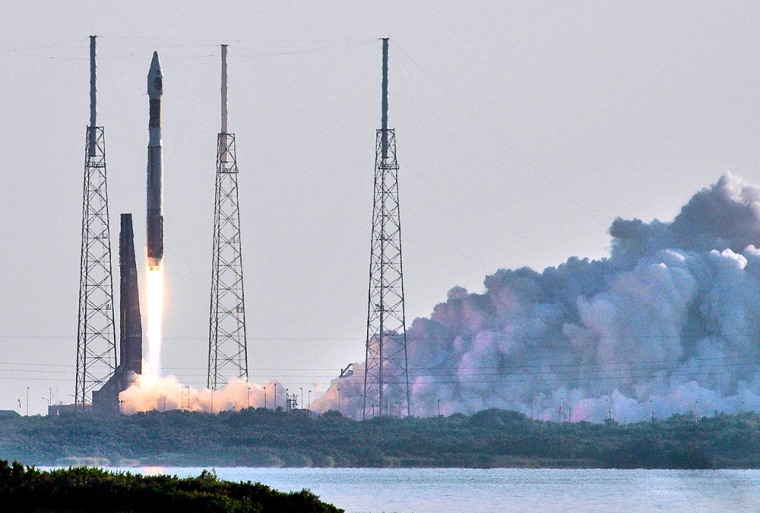A spacecraft designed to gather more Mars data than all previous missions combined blasted off Friday into a golden morning sky on its way to the Red Planet.
The Mars Reconnaissance Orbiter lifted off on an Atlas V rocket for the seven-month journey, which began three days after space shuttle Discovery completed its mission.
“So far, an absolutely terrific week for space exploration,” said Orlando Figueroa, a deputy associate administrator at NASA.
The launch went flawlessly. The booster rocket shut down and dropped off into the Atlantic minutes after liftoff, and the second-stage rocket separated less than an hour later, leading workers at the launch control center to break into applause. A short time later, two solar panels that will provide power during the voyage unfolded from the orbiter.
A glitch in computer sensors and software during fueling forced NASA to postpone the launch Thursday.
“What a difference a day makes,” said launch manager Chuck Dovale. “It couldn’t have been any smoother.”
Circling the planet for at least four years after arriving in March 2006, the orbiter is to provide unparalleled information on Mars’ weather, climate and geology, which could aid possible future human exploration of the Red Planet.
The $720 million mission is divided into two parts.
During its first two years, the orbiter will help build on NASA’s knowledge of the history of ice on the planet. The planet is cold and dry with large caps of frozen water at its poles. But scientists think it was a wetter and possibly warmer place eons ago — conditions that might have been conducive to life. Scientists are also trying to determine if it could support future human outposts.
Equipped with the largest telescopic camera ever sent to another planet, the orbiter also will collect data that will help NASA plan where to land two robotic explorers later this decade. The Phoenix Mars Scout, in search of organic chemicals, will be launched in 2007, and the Mars Science Laboratory will follow two years later.
During the second phase of its mission, the orbiter will serve as a communications messenger between the robotic explorers on Mars and Earth. The reconnaissance orbiter has a powerful antenna that can transmit 10 times more data per minute than the current trio of satellites positioned around the planet — NASA’s Global Surveyor and Mars Odyssey and the European Space Agency’s Mars Express.
Two NASA rovers launched in 2003, Spirit and Opportunity, continue to roam the planet and may be the first to relay information back to Earth via the reconnaissance orbiter.
The orbiter is loaded with two cameras that will provide high-resolution images and global maps of Martian weather, a spectrometer that will identify water-related minerals and a radiometer to measure atmospheric dust. The Italian Space Agency has provided ground-penetrating radar that will peer beneath the surface of layers of rocks or ice.
